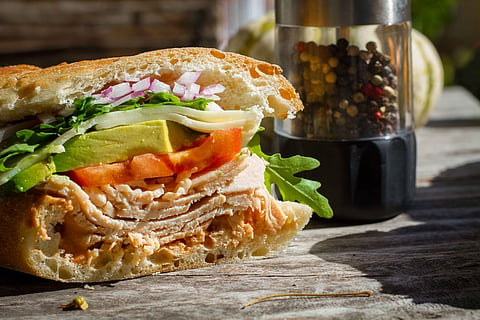
- Home
- EventsEvents
- Product Launches
- CategoriesCategories
- Advertise
- Opinion

Every time we shop for groceries, we're looking for meat and bakery items that we can enjoy at their freshest. But have you ever thought about what goes into making sure that meat stays fresh or that loaf of bread doesn't grow mold too quickly and end up as food waste in the trash? Keeping food safe and extending its shelf life is a huge priority for food producers because it's not just about taste—it's about our health, trust in the products we buy and food waste reduction. That's where the science of predictive modelling steps in, transforming the way food businesses ensure the longevity of our beloved foods.
Understanding predictive modelling in food protection and preservation
Predictive modelling might sound complex, but it's a concept we use in everyday life. Weather forecasts, for example, predict when it might rain so that we can plan our day. In the world of food protection and preservation, predictive modelling works in a similar way. It takes everything science knows about how meat and bread spoil—think of this as past 'weather reports' for food—and uses it to predict what could happen to these products under different conditions.
Using this smart technology, companies can run virtual tests on their food products long before they hit store shelves. If bread tends to develop mold under certain conditions, a predictive model can foresee this issue and suggest mold control changes to keep the bread fresh for longer. In the case of meats, the stakes are even higher, as pathogens can pose serious health risks. Predictive models can determine the ideal conditions to prevent spoilage, inhibit contamination outgrowth thereby extending freshness through meat safety solutions.
Key Benefits of Using a Predictive Shelf-life Model
Accurate prediction of product shelf life with reduced resource spend: Predictive models take out the guesswork and help businesses forecast exactly how long their products will stay good, without the need for costly and time-consuming trial and error.
Minimizing food waste when shelf-life extension is enabled: By ensuring products last longer on the shelves and in our homes, we can cut down the amount of food thrown away, tackling a huge environmental and ethical issue.
Enhancing consumer satisfaction and trust through consistent shelf-life performance: You can trust that your favorite piece of meat or fresh bread will be safe and tasty for as long as the predictive model promises, leading to a better experience with the brand.
Ongoing improvements in predictive models—thanks to contributions from the global science community—only make these predictions more accurate over time. Think of it as an instant starting point of the answer to a multifaceted question.
Using Predictive Modelling for Products
To better explain putting predictive modelling to use, take microbial modelling for bread as an example:
Start by setting a goal. Do you want to ensure your current preservative does its job optimally, or are you trying to find a better solution? Whether you are looking for an ingredient performance match where the output will be a recommended dosage, or extra shelf-life days from your current ingredient (or a new one), this will influence the approach within the model.
Have a detailed understanding of your current bread formula and the preservation ingredient(s) and dosage you use. You may need to have the product specification documents on hand for natural products where there is huge variability in the market in their functional composition.
Be ready to test various scenarios with potential new ingredients or changes to your bread formulation to discover the most effective solutions for improving product performance. The model will give an instant answer so it’s worth playing around with different scenarios before proceeding to plant trials, lab or shelf-life studies.
Deepen your knowledge of specific microorganisms present in your bakery that may affect your product's quality. For instance, if you are dealing with a resistant strain of Penicillium roqueforti in your bakery, consider stronger or more specific preservation strategies to enhance your bread’s shelf life.
As with all science, the more data available, the clearer the predictions. Real-world data about ingredients, environmental conditions, and past results are all important. And experts, such as microbiologists and statisticians, are key players in interpreting the data and information that predictive models deliver.
Looking Ahead: The Future of Predictive Modelling in Food Production
Predictive modelling is truly transforming the food industry. As we look to the future, we can expect these models to become smarter and more customer-focused, continuing to ensure our food is safe and stays fresh. The use of predictive modelling is set to align with the best practices in the industry, raising the bar for what we can expect from our food suppliers.
In a world where informed decisions are more important than ever, predictive modelling acts as a bridge between science and satisfaction, efficiency, and waste reduction. For both producers and consumers alike, this represents the future of food—smarter, safer, and more sustainable for all.
By Pornpun Theinsathid, Business Development Manager, Food Protection & Preservation, Meat, Kerry Asia Pacific, Middle East & Africa
Click HERE to subscribe to our FREE Weekly Newsletter
